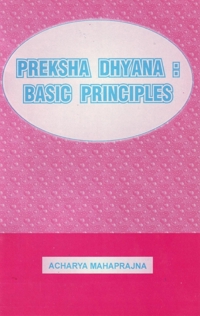Bodily movements, speech and mental functions are three-fold activities of our organism. One of the facets of meditational practice is reduction or total cessation of each of these activities. Three types of meditational practices thus ensure from the trinity of activities. Kãyotsarga, and its associates such as Kãyagupti, Kãyapratisaṁlīnatã etc. come under one of these three types.
Kãyotsarga literally means 'abandonment of the body coupled with high degree of conscious awareness'. In practice, it is conscious suspension of all gross movements of the body resulting in relaxation of the skeletal muscles and drastic reduction of metabolic activities. This physical condition results in relieving mental tensions and is an essential pre-condition for meditational practice. It becomes, therefore, the first phase of Prekṣã Dhyãna, and must be practised for a few minutes at the commencement of all types of this technique. Apart from this, Kãyotsarga may be independently practised daily for longer periods, if one learns and practises systematic relaxation everyday he would remain relaxed, calm and unperturbed in any situation. Physically it is more restful than sleep, and is the most harmless and direct antidote to psychosomatic maladies resulting from tension. Spiritually, in this process, the lifeless body is cast off, while the consciousness soars upwards freed from and outside its material shell.
Method of KãyotsargaChoose a comfortable position; 'Lotus-posture' is ideal, but other ones can also be adopted. Keep your spinal cord, neck and head in a straight line without causing tension. For longer period, lying flat on a hard ground on a blanket is more suitable. Relaxation commences with the total cessation of the voluntary movements. Since breathing and relaxation are linked together, be aware of your breathing. If it is shallow, hasty and irregular, regulate it until it becomes even, slow and rhythmic. After this, it may be forgotten altogether. Next persuade every muscle in each part of the body to relax by auto-suggestion. Keeping the body entirely motionless, allow the mind to move in small steps keeping in mind that the technique is that of patient persuation, and not forced by strong will-power. Auto-suggestion is followed by an experience of relaxation in each part. When the whole body has become relaxed, there is an acute and actual perception of rest and relaxation, which is no longer auto-suggestion, but is real experience. Once this stage is reached, the body is cast off and forgotten, and the conscious element reveals its separate existence. Thus Kãyotsarga is not only total relaxation, but actual perception of the self, quite apart from the material non-self i.e. the body.
 Acharya Mahaprajna
Acharya Mahaprajna

